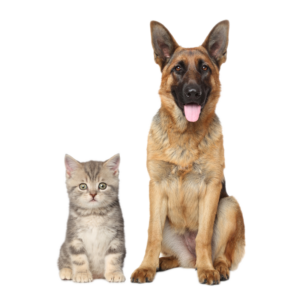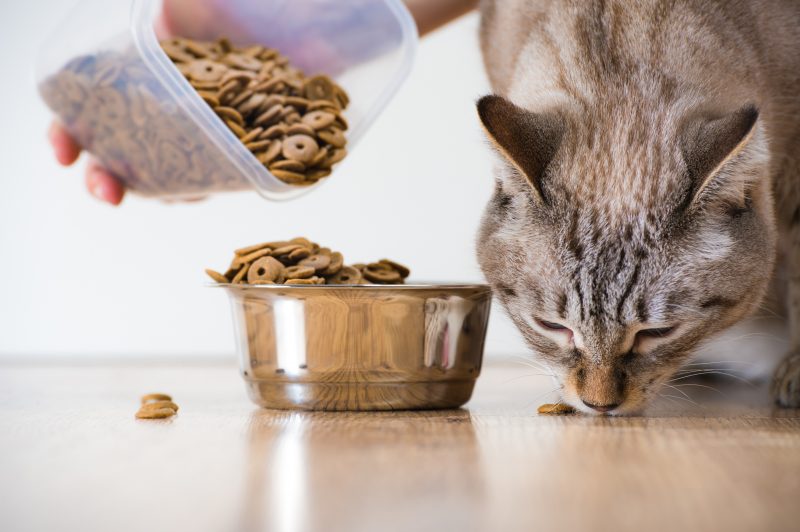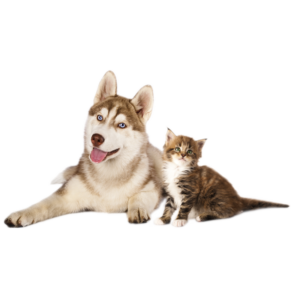Fat cats are one of the most frustrating problems I see at work. My clients know their cat is fat. Some of them even know it can mean arthritis, heart disease, and diabetes. They know they need to “feed less” and “exercise more”. It feels like easy advice for the owner of an overweight dog. Not a lot of help for those of us with lazy, fat cats.
So you run out for a weight loss cat food and then measure it carefully every day. You slowly cut back the number of kibbles to reduce how many calories your cat is eating. This was the route I took. One day I watched my cat’s paunch swing like a caffeinated pendulum when he ran ahead of me to his bowl, and I had to remind myself that calories out is just as important as calories in. Without exercise, none of us can burn all the calories stored in body fat.
This raises an important point – when it comes to obesity, we want to focus on fat loss, not weight loss. Your cat (or dog, or you, or I) should be losing the excess fat, not water or muscle. If you’ve ever had a geriatric pet you may have noticed they lost weight in the last few years of life, without a diet change. Geriatric animals lose muscle mass as their muscle waste away. Prescription veterinary diets are designed to help geriatric dogs and cats keep their lean muscle mass, and prescription “weight loss” diets are actually designed to help your pet lose fat and maintain their muscle mass.
Whatever you’re feeding, you probably have a typical cat, and hearing “exercise more” makes you want to slap someone. How the heck do you exercise a fur puddle? As cats age, they lose their kitten playfulness. It takes a little more investigation to determine what interests them. A cat that played fetch as a kitten may no longer want to run down the hall and vault over the couch. Been there, done that. As an adult, however, that same cat may happily stalk a shoelace all through the house, then jump over the couch to follow it once he’s excited. They may not be kittens, but grown cats are still hunters. Tap into that instinct, and keep the sessions short and intense, like a true hunting experience.
Your cat has never played fetch! He or she may surprise you. Try a wad of newspaper, a ping pong ball, a pompom. Fishing pole toys, shoelaces or a long strip of fabric are just as fun, and you can make them yourself. Some cats will ignore a toy on open ground, but go crazy when it’s tossed in a bag. Keep large paper bags from the cat litter, the liquor stores, or groceries stores. Cats can jump in them if they’re standing up, or use them as caves and tunnels (if you open the other end). Be creative. This is the rare time that the internet can be truly helpful – it is amazing the free games and toys people have created to entertain their fuzzy feline.
Whatever exercise you two discover, communal play sessions only need to be 10 or 15 minutes a couple of times a day. Your cat’s attention span for play isn’t much longer than yours. Try as soon as you get home from work, if your cat has energy then after a day of napping in your absence. It’s also a good opportunity for you to mentally distance yourself from the stress of the workday, and adjust your mind and attitude to home life once more. Think of it as multi-tasking, if you can’t yet give yourself permission to goof off during a busy week; you’re de-stressing, almost meditating really, and you’re exercising the cat. And bonding with your pet! Heck, teach him how to fill the crock-pot and you could have dinner done at the same time! Or just order a pizza and make a cardboard cat tent that smells like heaven.
Okay, so after all of this, you’re rolling your eyes? You have a blob at home that won’t even raise a paw if you coat a string in catnip? If all they care about is food, make them work for it. At suppertime, when they start paying a little more attention to you, measure out the food as normal, then walk around the house. Some people move their cat’s food dish to the top of a staircase and watch their cat bolt up the stairs for dinner. It may be the first time they have seen their cat run in years. If you only feed once in the evening, break that meal into two or three, so you cat gets two or three walks a day. Do the same for the morning meal.
My favourite cat tool is my feeding ball. It is completely round with holes in it just the right size for a couple of kibbles to come out at a time (my last one was flat where the one hole was, and if the cats rolled it completely upside down, they could not flip it back with their paws. It had to be picked up with a thumb. I don’t have that one anymore). After a small breakfast and five minutes of playtime, I put the rest of their morning food in the ball. I think the original idea of the food ball was the cat would bat it all around the house, chasing it for food. I haven’t seen a cat do that, but it is still more effort to find and tip the ball than it is to eat from the bowl. When their initial hunger is satiated, cats tend to walk away. In the evening, check how much food is still in the ball and subtract that from their evening meal. Be patient and persistent – it can take time for your cat to accept a feeding toy.
My favourite part about food toys is they allow my boys to have multiple small meals throughout the day. This is a more natural way for cats to eat. Even though I am almost 100% positive they sleep the whole time I’m gone, I take comfort in the knowledge that while I am at work, they can feed themselves whenever they get hungry…. provided I left the holes in the food ball unplugged.
In general, pay attention to your cat’s feeding habits. Some eat more at night, so a larger portion of their food should be left out at night. Midnight feedings – what a great time for feeding toys. I wonder how long it will be before some innovative mother will come up with a similar solution for infants?
Written by Bedford South Veterinary Hospital



